Traffic Safety Toolbox - Addressing Speeds
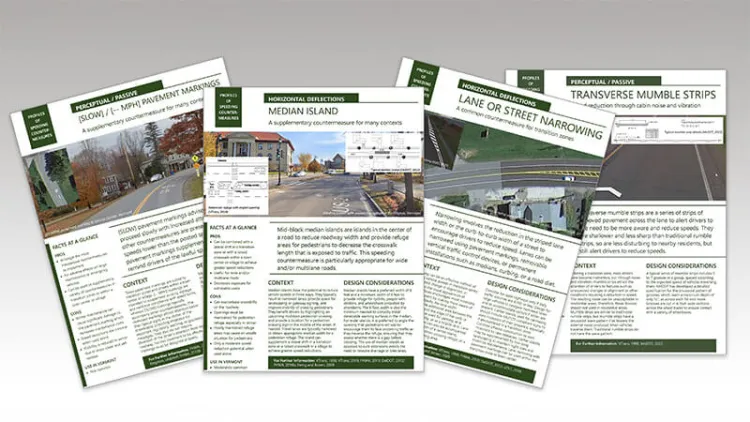
Reducing vehicle speeds is an important strategy for reducing the risk and severity of collisions and ensuring the safety of drivers, pedestrians, and cyclists, especially in transition zones, where rural highways with higher posted speeds (typically 50 mph) enter a village or town center. This Traffic Safety Toolbox (“Toolbox”) of speeding countermeasures is intended for use by Vermont towns with posted speeds that are not widely adhered to by drivers, whether in a transition zone entering a village or town center (roads with speed limits of 35 mph and above and functional classifications of 3 or 4), or within the community itself (roads and streets with speed limits below 35 mph and functional classifications of 5 or higher).
Principal Investigators: Dana Rowangould and James Sullivan
Project Sponsor: Vermont Agency of Transportation
Related Publications:
- Sullivan,J., D. Rowangould, D. Dytioco, and E. Quallen (2023). Traffic Safety Toolbox: Speeding Countermeasures Toolbox for Vermont. Prepared by the University of Vermont Transportation Research Center for the Vermont Agency of Transportation. [Report and Toolbox]
- Sullivan, J., and D. Rowangould (2023). Traffic Safety Toolbox - Addressing Speeds: Final Report. Prepared by the University of Vermont Transportation Research Center for the Vermont Agency of Transportation. [Report]
Effectiveness of Rectangular Rapid Flashing Beacons (RRFBs) at Mid-Block Crosswalks
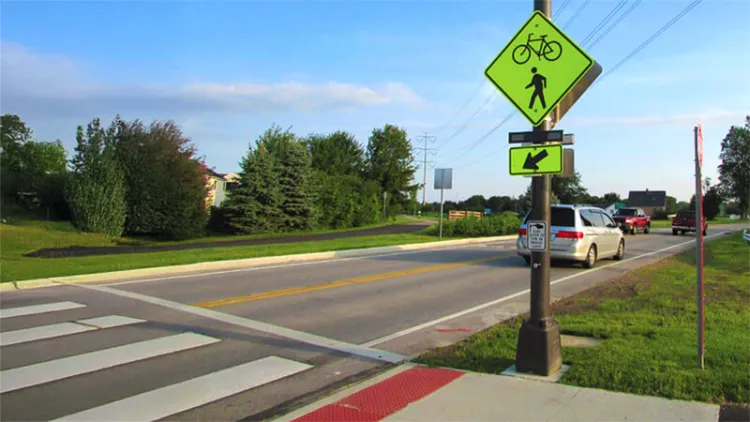
Ensuring the safety of pedestrians and cyclists in rural and small communities is becoming increasingly important as planners seek to encourage active travel and eliminate traffic-related injuries and fatalities, consistent with Vision Zero. One area of focus is the protection of vulnerable road users such as pedestrians, who face a significant risk of injury or death in a traffic collision. The risks to pedestrians are particularly high when crossing roadways in high-risk areas such as high-speed and low pedestrian-volume rural roads and between intersections where drivers may not expect them. One concern in rural communities is that pedestrians may face a heightened risk in rural transition zones as they approach the boundary of a city, town, or village from a higher-speed rural highway. In these settings drivers’ perceptions may lag behind their changing surroundings, and their awareness of reduced speed limits and the presence of pedestrians may be diminished.
This research addresses the need to evaluate the effectiveness of RRFBs in rural and small communities. We first review prior literature on RRFB effectiveness to synthesize research insights that provide contextspecific guidance for their use as well as gaps in this literature. To supplement this body of research, we use a rigorous observational research design to evaluate the effectiveness of RRFBs within the unique context of small and rural communities in Vermont. Our results are used to provide recommendations for updating Vermont's RRFB guidelines.
Principal Investigators: James Sullivan and Dana Rowangould
Project Sponsor: Vermont Agency of Transportation
Related Publications:
- Pezeshknejad, P., Rowangould, D., (2024). Evaluating safety and compliance of pedestrian crossings in rural contexts: A before and after study of RRFBs and LED-embedded signs. Accident Analysis and Prevention 198, 107462.
- Rowangould, D., J. Sullivan, and P. Pezeshknejad. (2023) Effectiveness of Rectangular Rapid Flashing Beacons (RRFBs) in Small and Rural Communities. Prepared by the University of Vermont Transportation Research Center for the Vermont Agency of Transportation. [Report]
- Pezeshknejad, P., and Rowangould, D., 2024. Policy Brief: Evaluation of the Safety of Pedestrian Crossing Treatments in Small and Rural Communities. University of Vermont Transportation Research Center. [Policy Brief]
Development and Application of a Cost-Benefit Tool for Quantifying External Social Impacts of Small to Mid-Size Transportation Projects
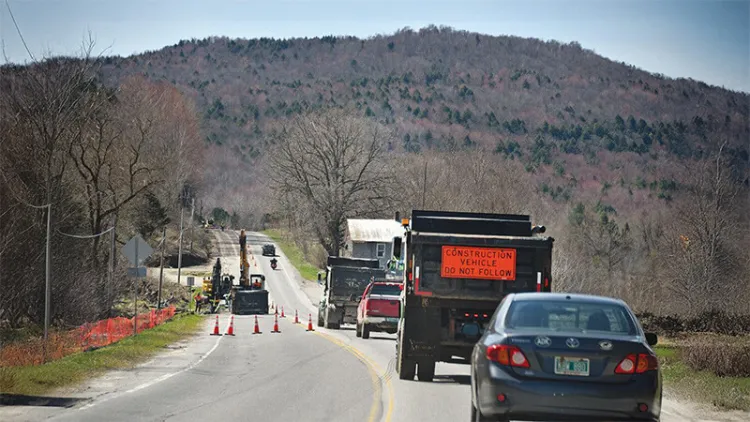
This project will focus on developing methods for quantifying the external social costs of transportation civil infrastructure projects, particularly small to mid-size projects that are common in New England states.
Principal Investigators: Mandar Dewoolkar, Dana Rowangould, John Lens, Greg Rowangould
Project Sponsor: Transportation Infrastructure Durability Center
Bridge-stream network assessment to identify sensitive structural, hydraulic and landscape parameters for planning flood mitigation
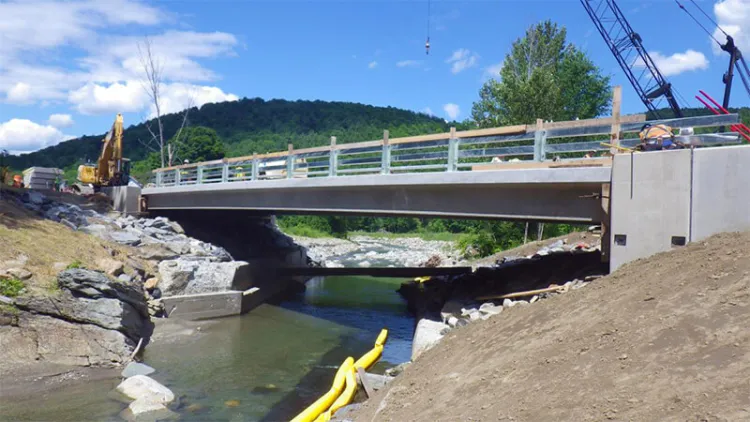
This project will develop an analysis method to understand how localized changes at a given bridge, stream or road affect the entire river corridor. This will help transportation agencies in managing their bridge and stream assets for maintenance and capital planning for upgrades, and also address stakeholder concerns raised in response to planned alterations.
Principal Investigator: Mandar Dewoolkar
Co-investigators: Donna Rizzo and Arne Bomblies
Project Sponsor: Transportation Infrastructure Durability Center
Evaluating the Contribution of Paved Surfaces to Intra-Urban Heat in Small Communities
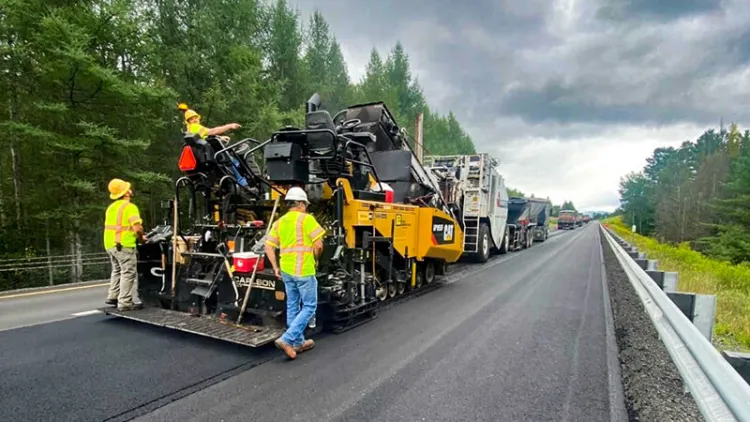
This research will evaluate how paved surfaces affect surface and canopy layer air temperatures in smaller communities in Vermont and estimate population exposure to intra-urban heat caused by the presence of paved surfaces in each community type.
Principal Investigator: Brittany Antończak
Project Sponsor: University of Vermont and Federal Highway Administration
Evaluation of processed glass aggregate for utilization in transportation projects as a sand borrow

The overarching goal of this project is to catalyze the use of Processed Glass Aggregate (PGA) as a substitute for increasingly scarce sand-borrow material in transportation projects in Vermont, New England, and beyond.
Principal Investigator: Mandar Dewoolkar, Matthew Scarborough, Gregory Rowangould, Ehsan Ghazanfari and Ting Tan
Project Sponsor: Transportation Infrastructure Durability Center
Development of a System-Level Distributed Sensing Technique for Long-Term Monitoring of Concrete and Composite Bridges
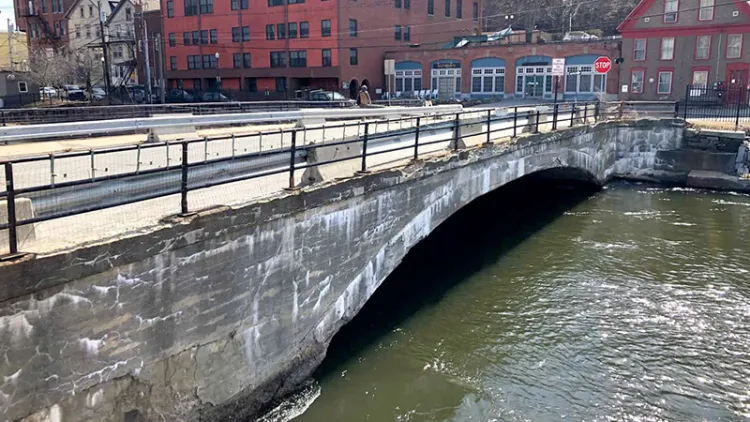
In this project, Brillouin Optical Time Domain Reflectometer (BOTDR) technique has been adopted for distributed sensing of mechanical and thermal strains of bridges.
Principal Investigator: Tzuyang Yu
Co-investigators: Susan Faraji, Xingwei Wang, Zhu Mao, Ehsan Ghazafari and Bill Davids
Project Sponsor: Transportation Infrastructure Durability Center
Enhancing Intelligent Compaction with Passive Wireless Sensors
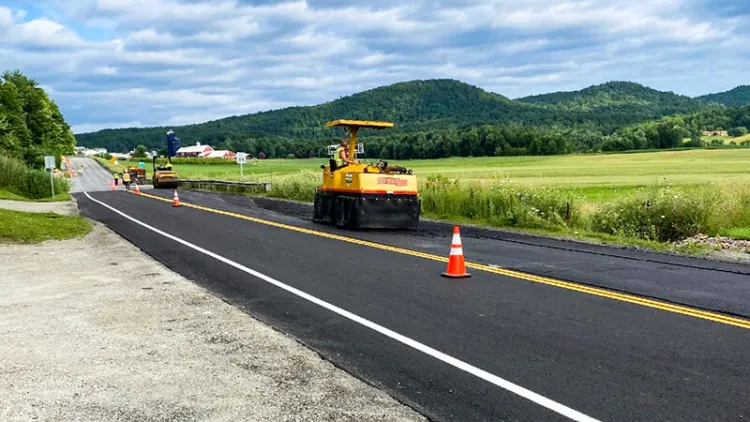
In this project, the authors aim to improve the Intelligent Compaction (IC) performance and facilitate the process of geomaterial compaction and pavement performance monitoring by integration of passive sensing system with IC.
Principal Investigator: Ehsan Ghazanfari
Co-investigator: Hamid Ossareh
Project Sponsor: Transportation Infrastructure Durability Center
Value of VTrans Research: Qualitative and Quantitative Analysis

The purpose of this research is to improve the Agency’s ability to assess the value of external research projects with a specific focus on developing and demonstrating a qualitative assessment strategy that can be applied to all research projects.
Principal Investigators: Jonathan Dowds and Gregory Rowangould
Co-investigator: Hamid Ossareh
Project Sponsor: Vermont Agency of Transportation
High Performance Concrete with Post-Tensioning Shrinking Fibers
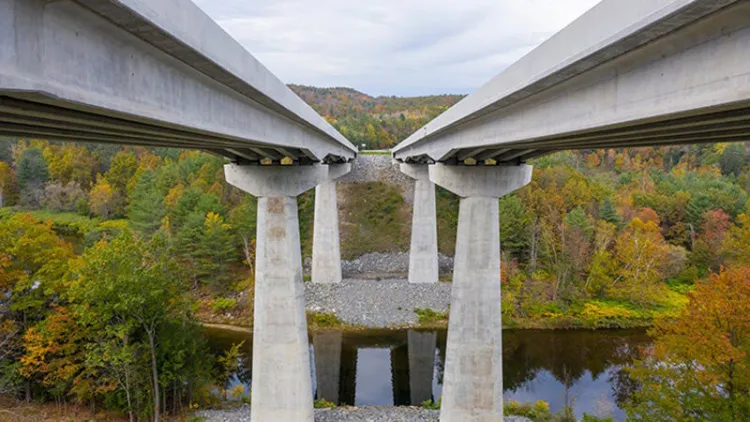
This research improves upon the technique of reinforcing concrete with dispersed fibers by having the fibers axially shrink after curing to produce a dispersed multi-axial post-tensioned state. Such reinforcing has the potential to increase the crack resistance and durability of the concrete.
Principal Investigator: Dryver Huston
Project Sponsor: Transportation Infrastructure Durability Center
Intelligent Transportation Systems Professional Capacity Building
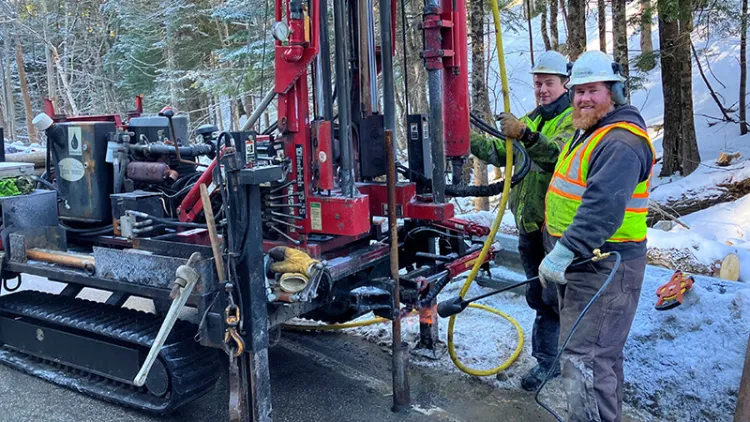
The goal of this project is to support the development of academic resources and career pathway tools to address the emerging and future needs of the workforce to support intelligent transportation systems.
Principal Investigator: Glenn McRae
Project Sponsor: USDOT/VOLPE National Transportation Systems Center
Investigating the Effectiveness of Enzymatic Stabilizers for Reclaimed Stabilized Base Projects
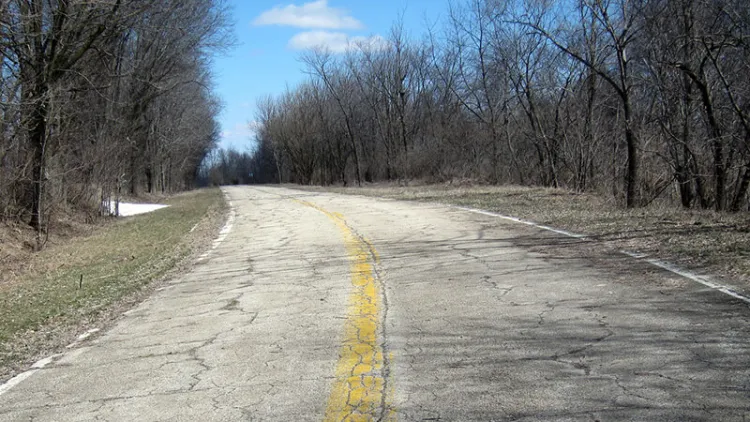
The overarching goal of this project is to evaluate the effectiveness of enzymatic stabilizers in Reclaimed Stabilized Base (RSB) projects in Vermont and the Northeast region.
Principal Investigators: Ehsan Ghazanfari and Mandar Dewoolkar
Project Sponsor: Transportation Infrastructure Durability Center
Leveraging High-Resolution LiDAR and Stream Geomorphic Assessment Datasets to Expand Regional Hydraulic Geometry Curves for Vermont: A Blueprint for New England States
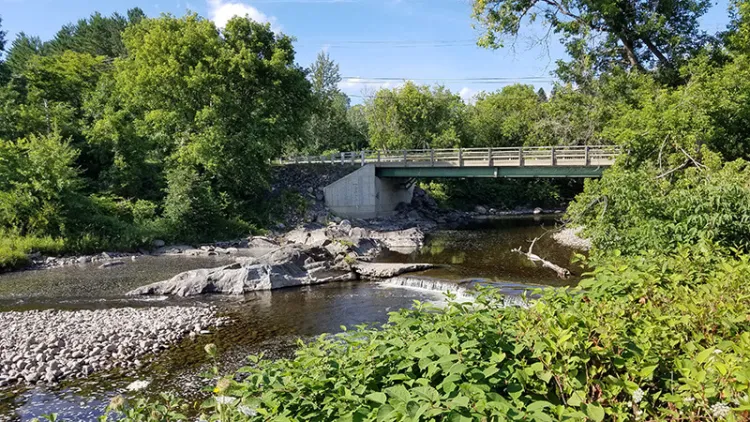
Regional hydraulic geometry curves for Vermont and surrounding portions of New England states will be updated through consideration of additional observations and through the advanced statistical techniques that leverage the new application of available high-resolution LiDAR and stream geomorphic assessment data.
Principal Investigator: Kristin Underwood
Co-investigators: Arne Bomblies and Donna Rizzo
Project Sponsor: Transportation Infrastructure Durability Center
Measuring Adhesion Between Binders and Aggregates Using Particle Probe Scanning Force Microscopy at Low Temperatures
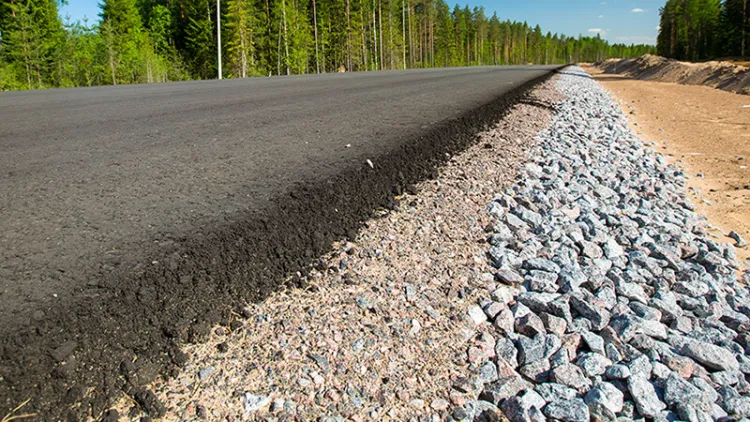
This project will measure adhesion between plain binders and aggregate minerals at low temperatures, and measure adhesion between modified binders and aggregate minerals at low temperatures.
Principal Investigator: Ting Tan
Project Sponsor: Transportation Infrastructure Durability Center
Performance Structural Concrete Optimized for Cost, Durability and Manufacturability
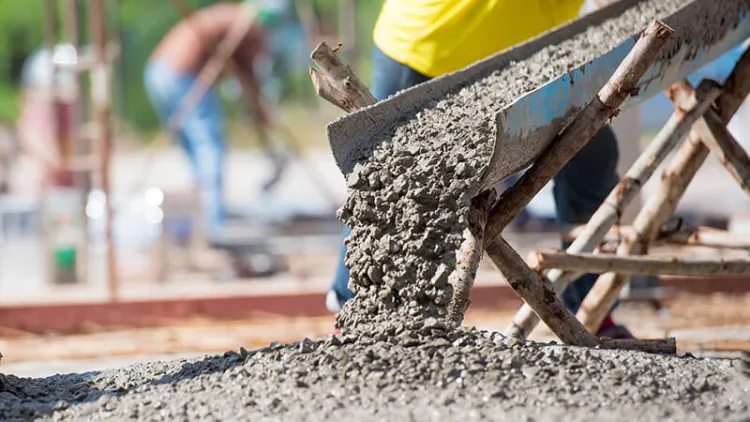
The primary goal is to develop concrete mix designs that meet modern high-performance durability requirements while being practical to manufacture with New England-sourced materials and suppliers.
Principal Investigators: Dryver Huston and Ting Tan
Project Sponsor: Transportation Infrastructure Durability Center